DXY was own Friday night as EUR and CNY rebounded:
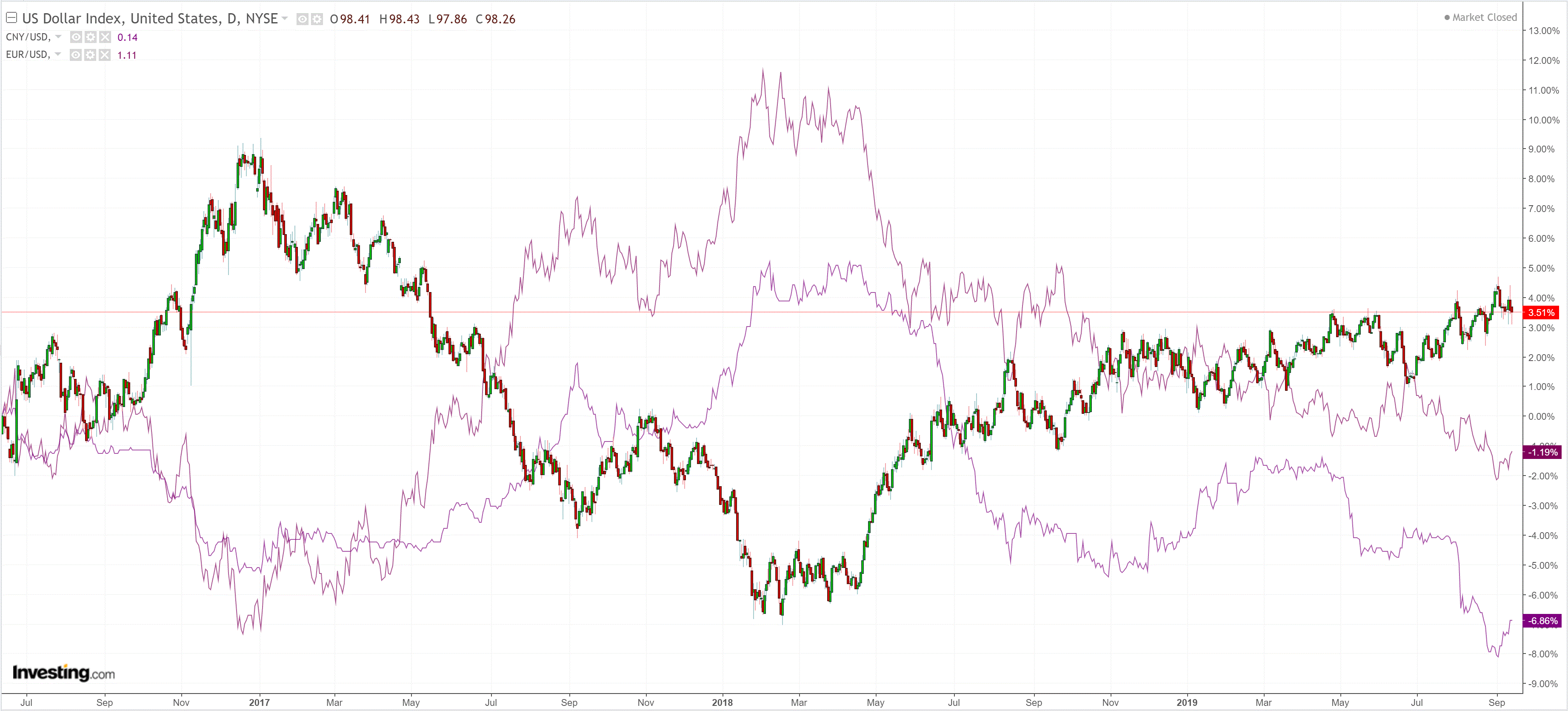
The Australian dollar was mixed against DMs:
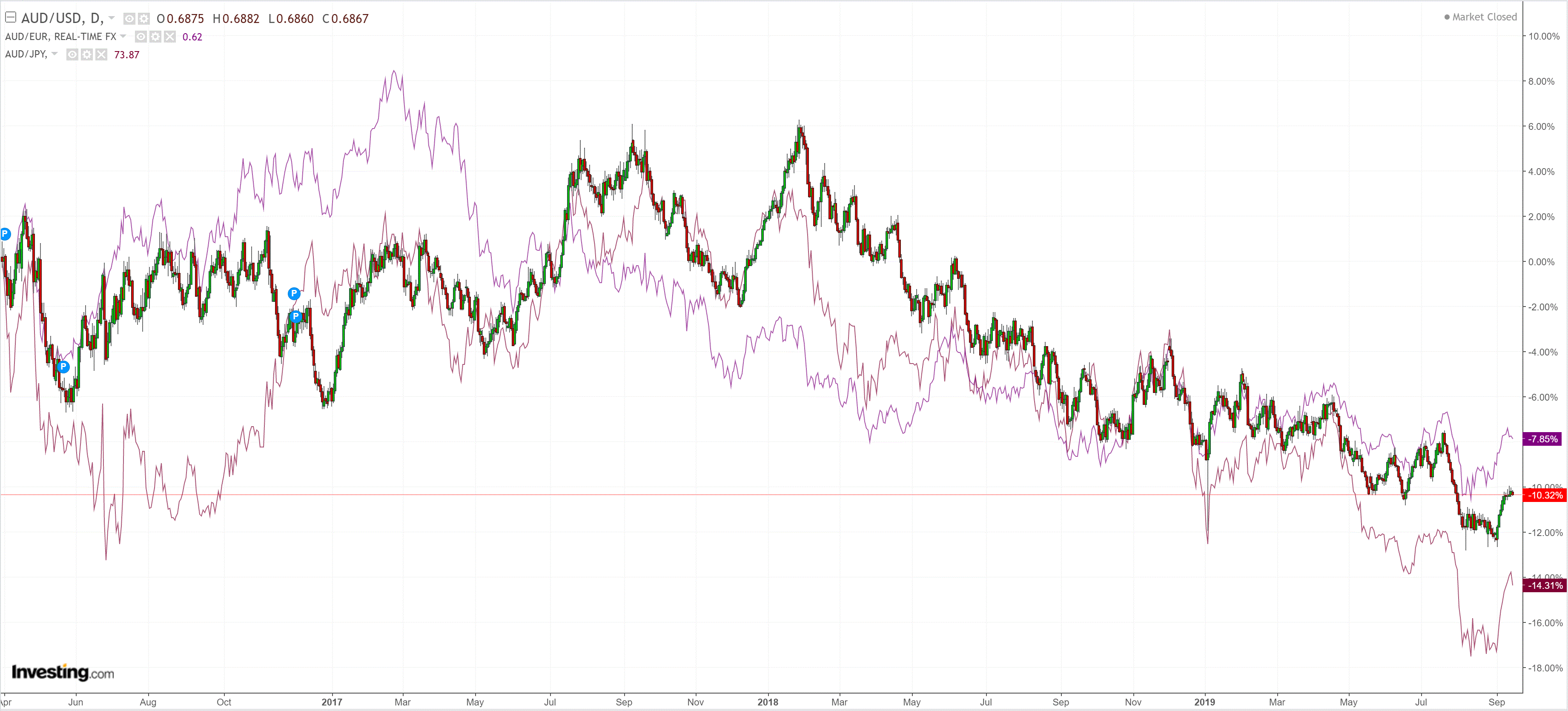
And EMs:
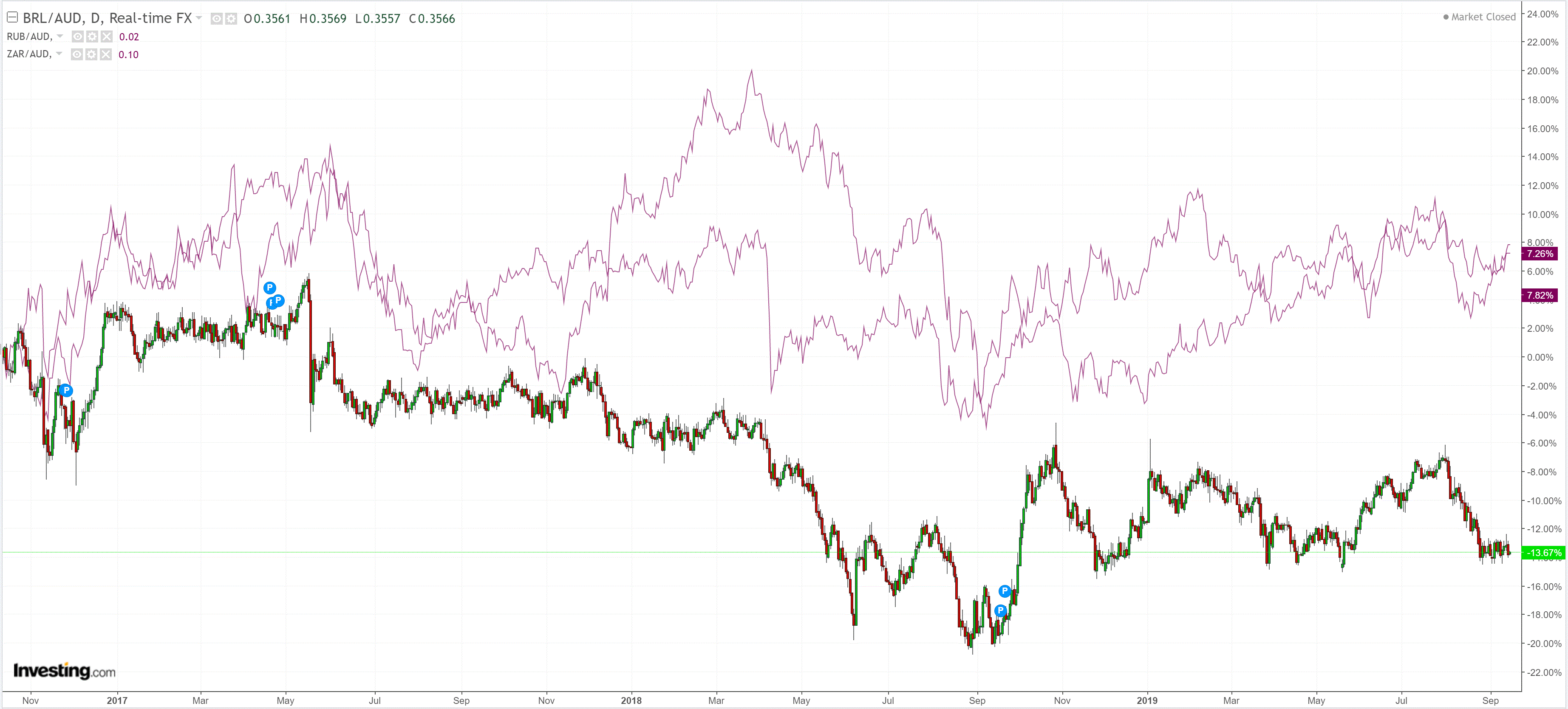
Gold fell:
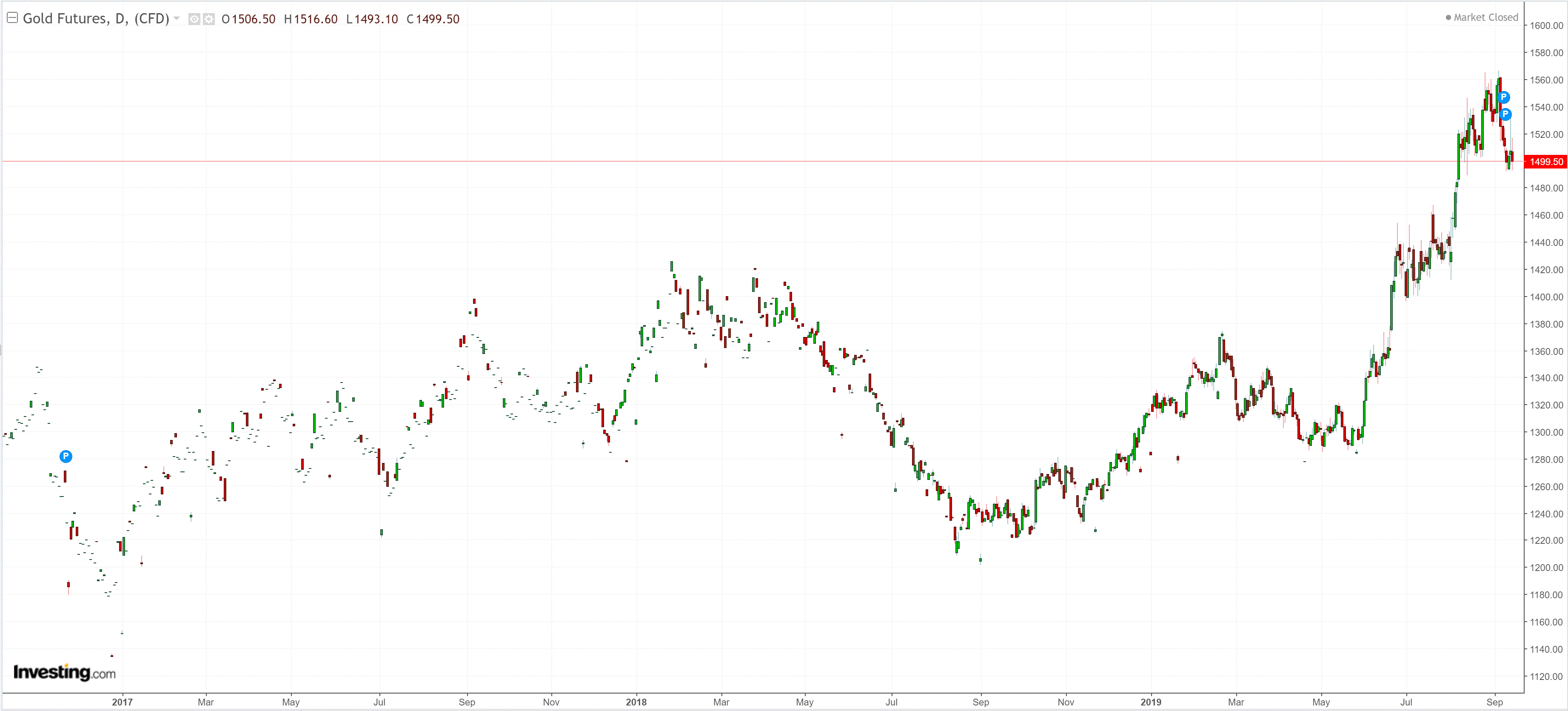
Oil fell:
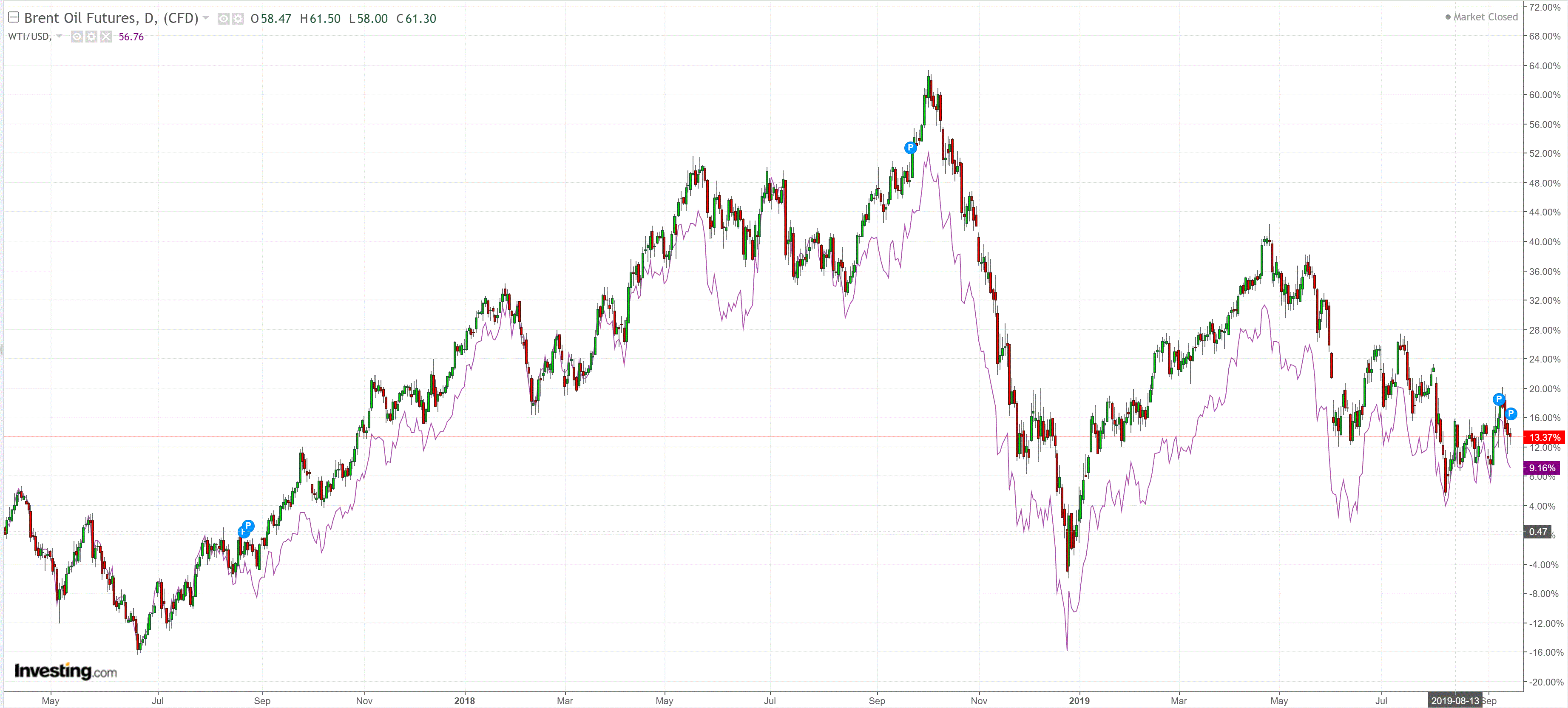
Metals bounced:
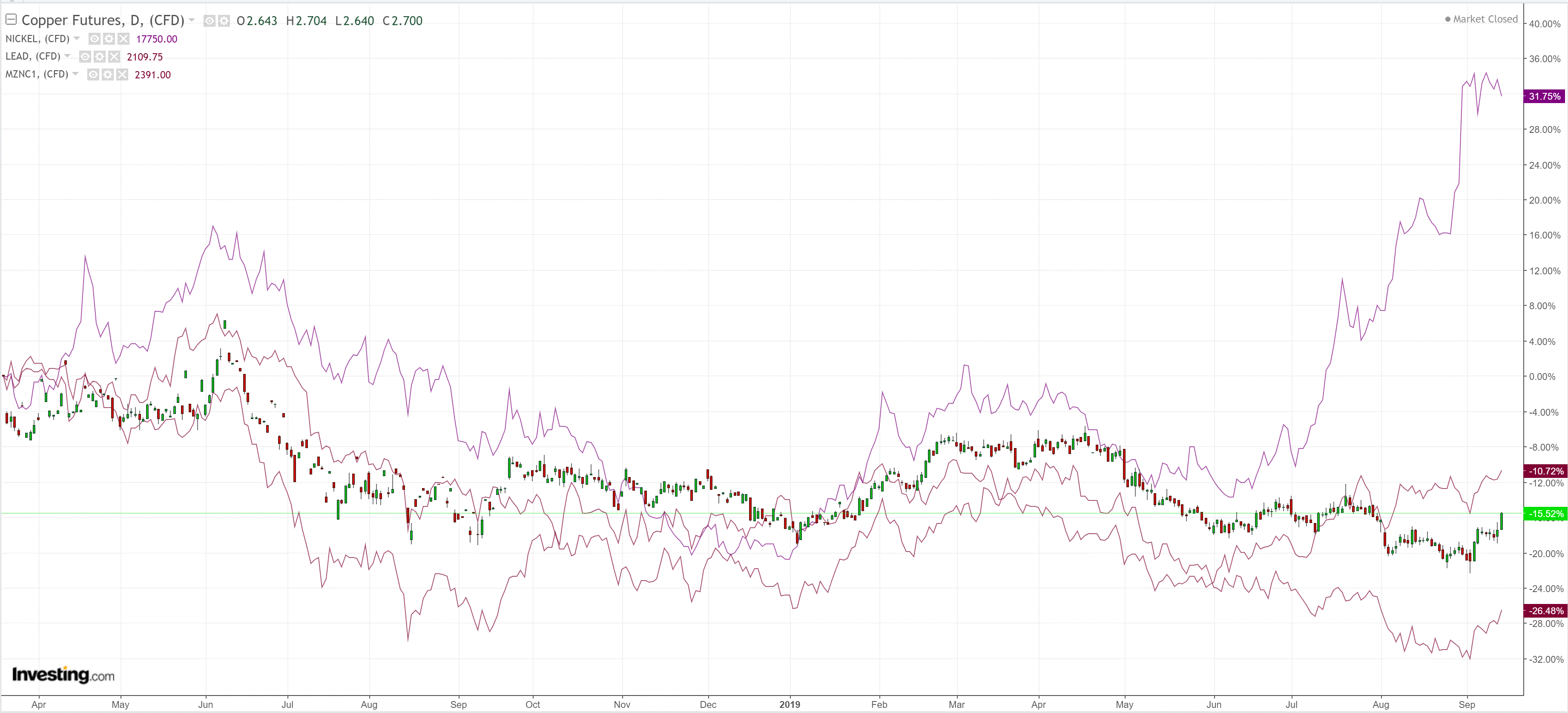
Miners are in heaven for no known reason:
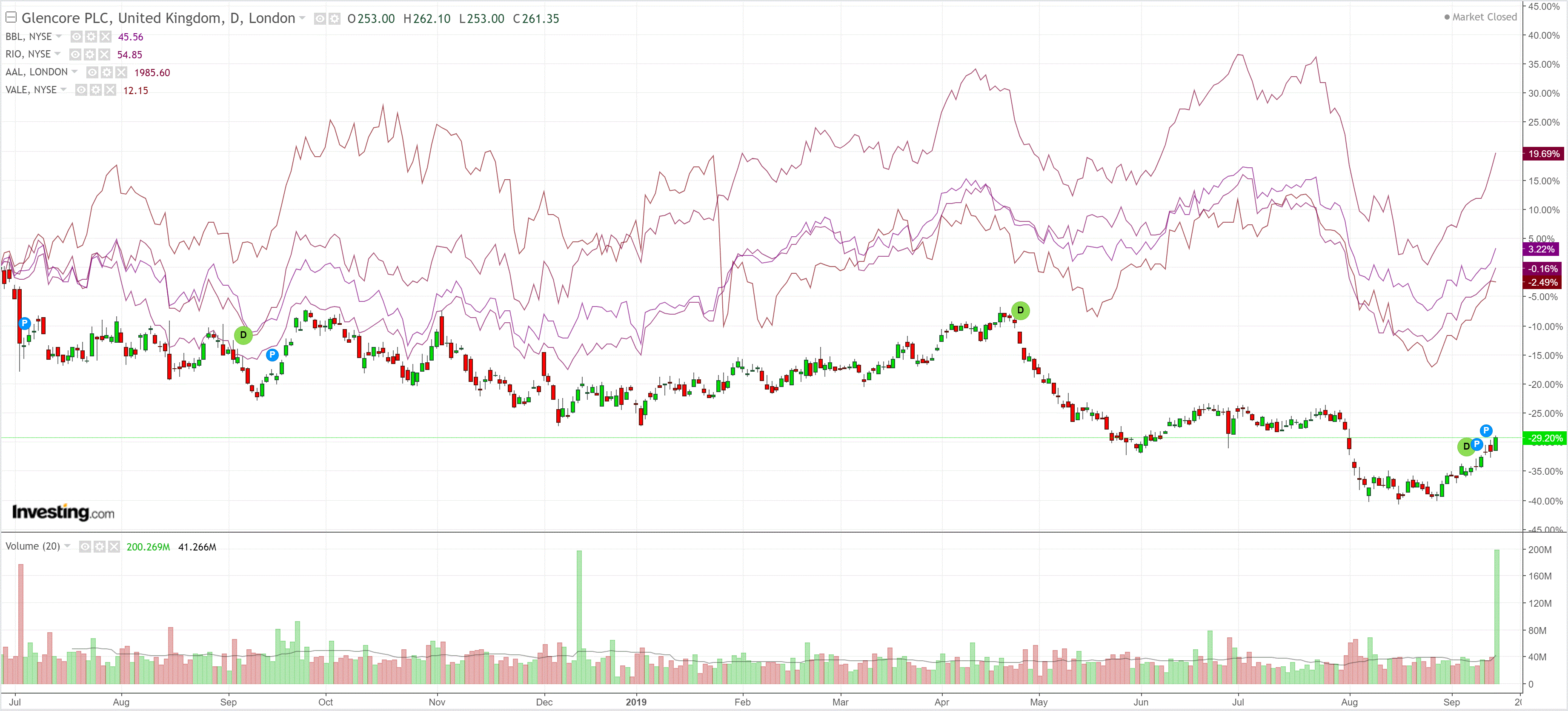
EM stocks pushed higher:
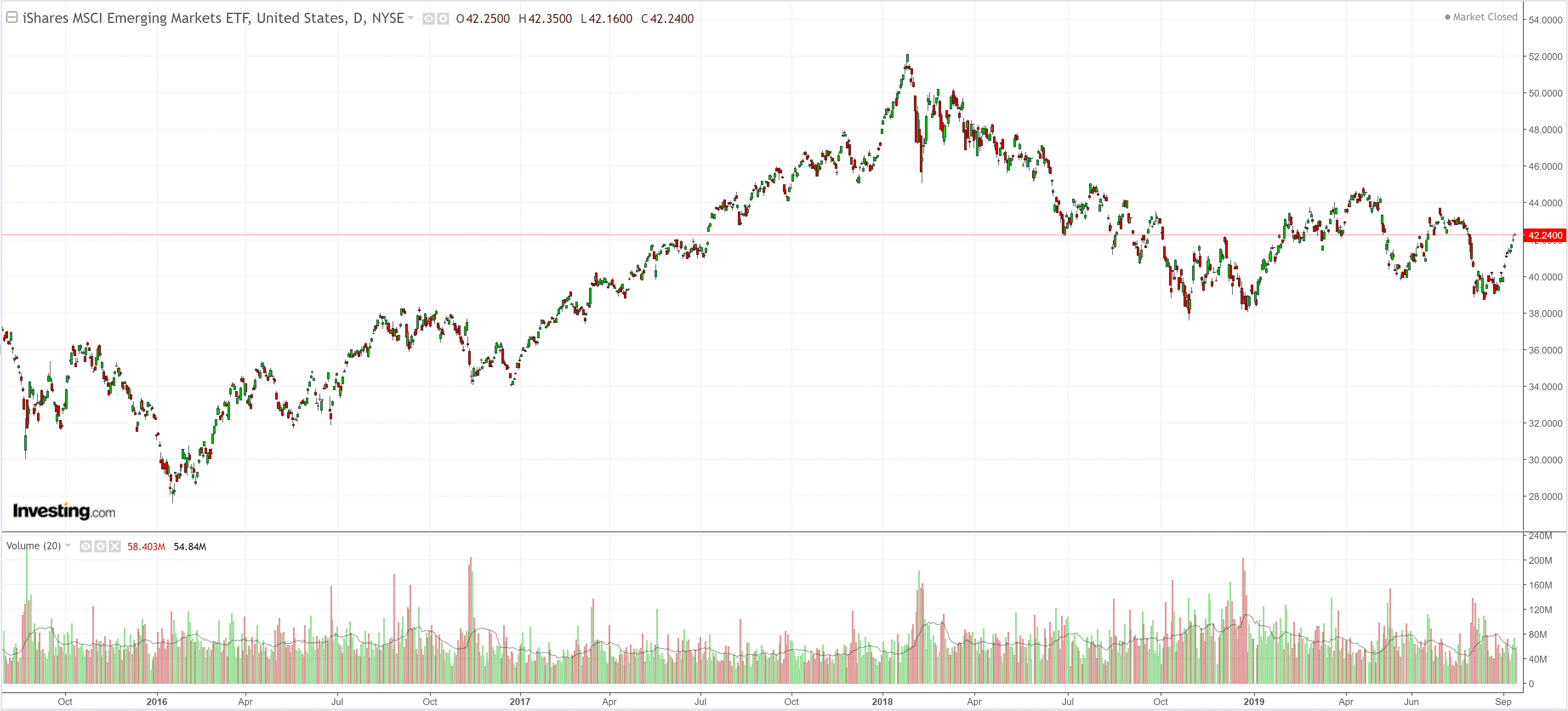
Junk too:
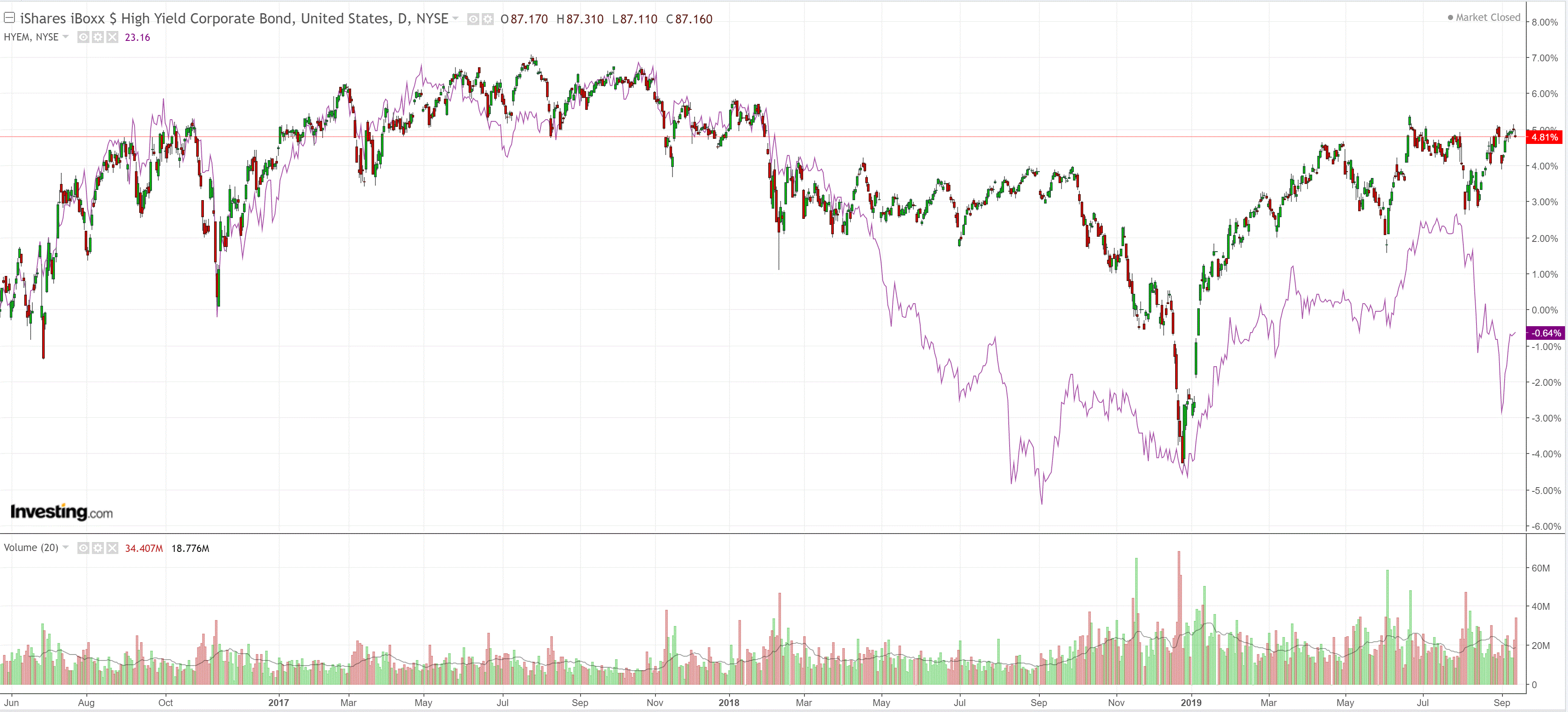
Treasuries were smashed:
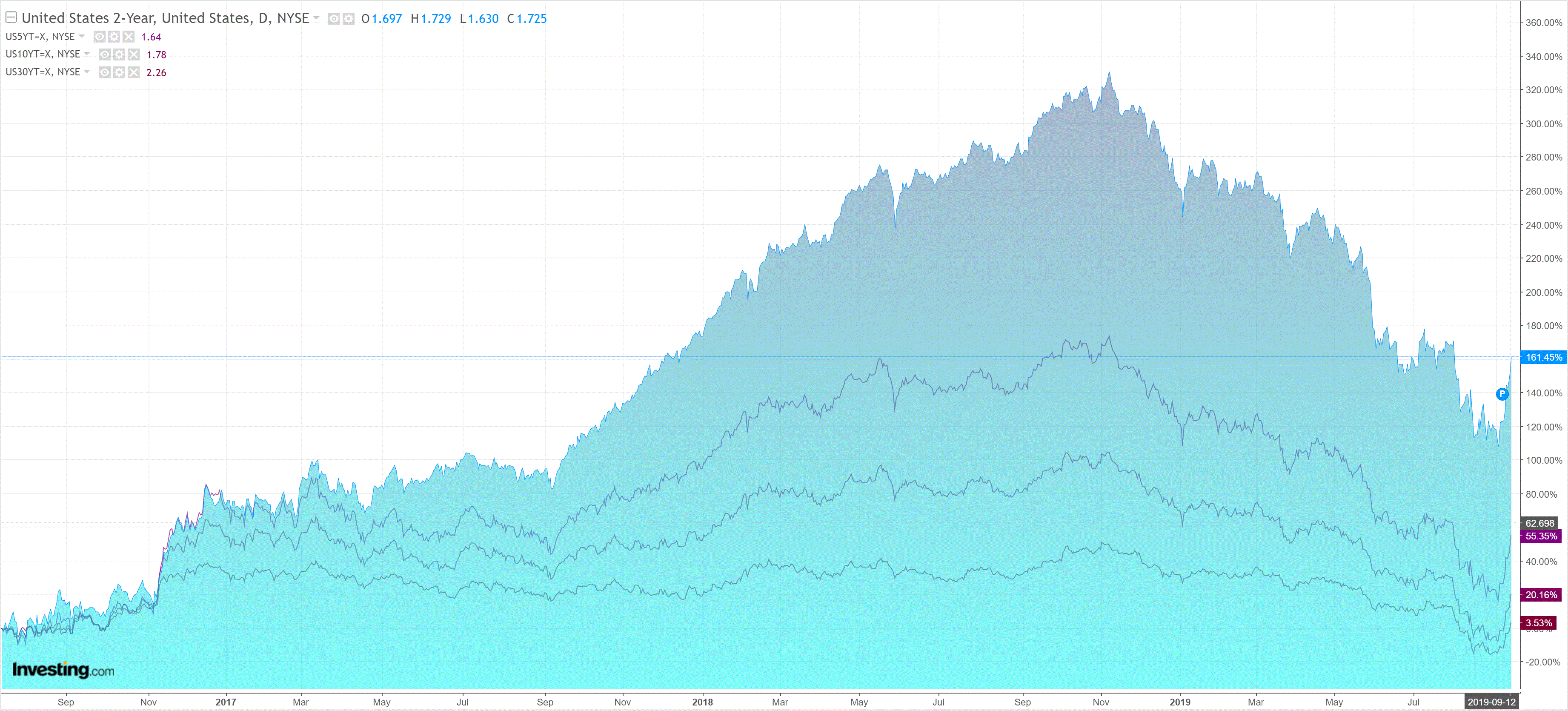
Bunds too:
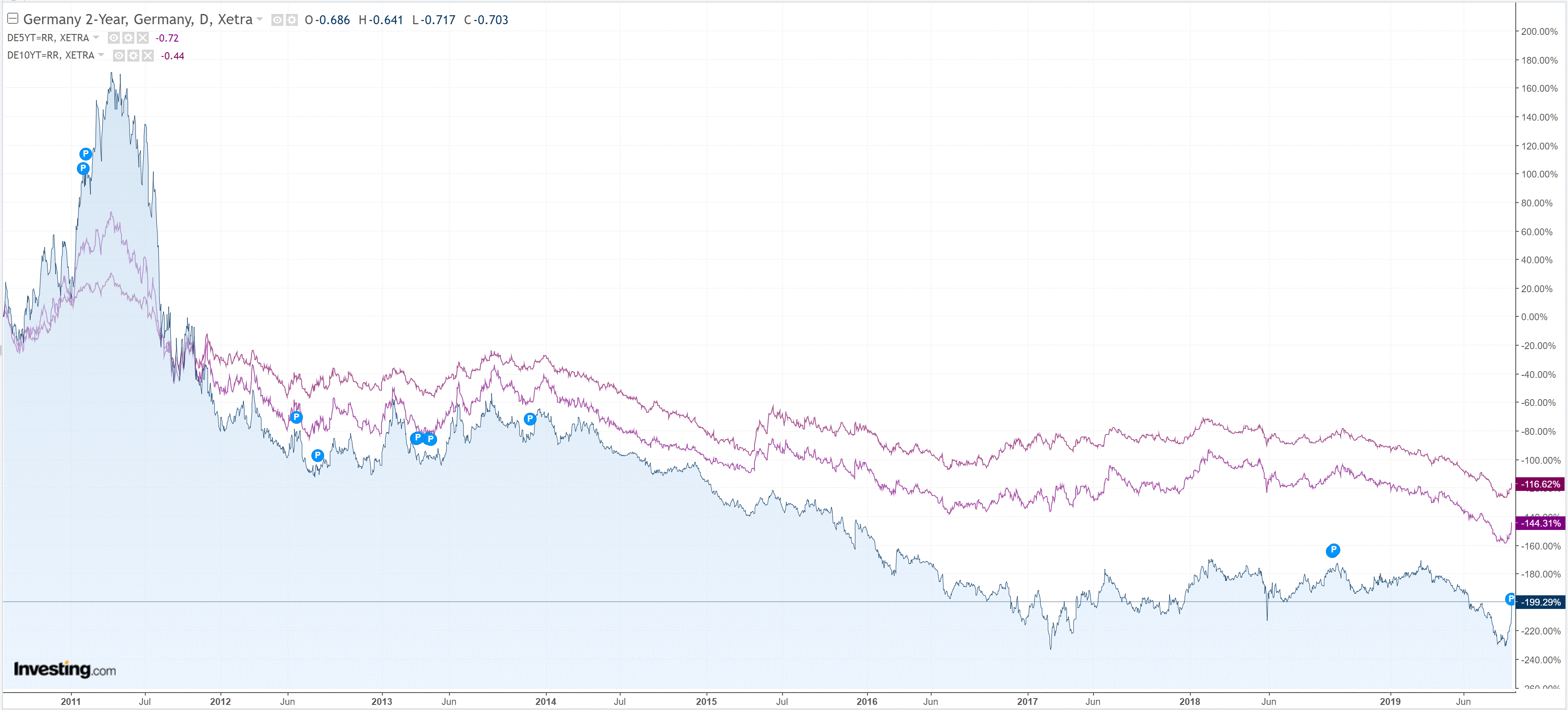
And Aussie bonds:

Stocks were firm:
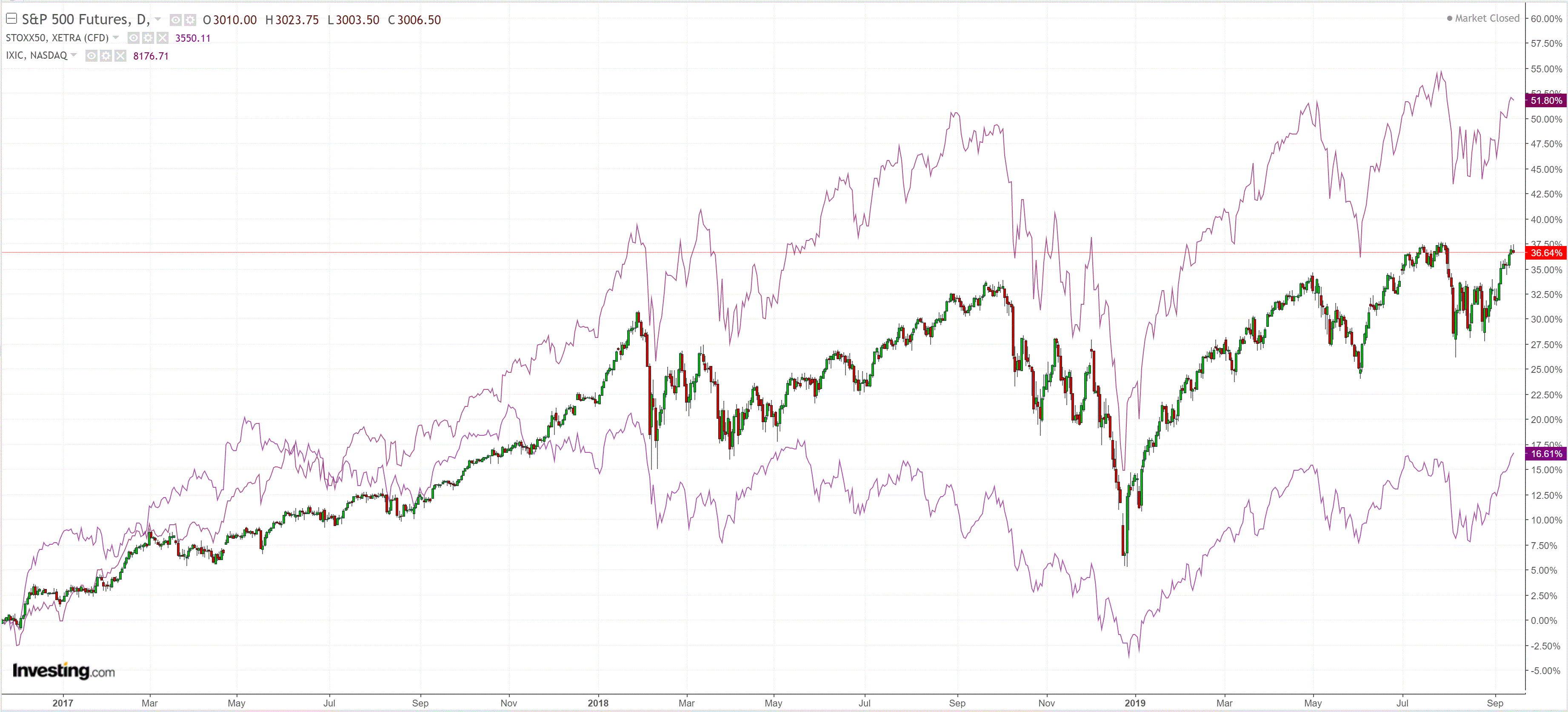
Westpac has the wrap:
Event Wrap
US retail sales rose 0.4% in August (vs 0.2% expected), mostly reflecting strong auto sales, and July was revised from 0.7% to 0.8%. Core measures were less impressive, though, the control group up 0.3% as expected. Overall, the report indicates consumer activity remains healthy.
US consumer confidence (Michigan Univ.) increased from 89.8 to 92.0 (vs 90.8 expected).
Inflation expectations for 5-10yrs ahead slipped from 2.6% to 2.3%, although the year-ahead measure rose from 2.7% to 2.8%.
Event OutlookChina: The Aug monthly NBS data release will provide updates on fixed asset investment, industrial production and retail sales. Global weakness has continued to hold back activity, and some challenges in the labour market are limiting upside for retail sales.
Europe: ECB Chief Economist Lane speaks in London.
The news all changed over the weekend, as oil took centre stage, via ZeroHedge for another wrap:
- Saudi Arabia has shut down approximately half (5 mb/d) of its oil output after coordinated drone strikes have hit Saudi oil processing facilities at Abqaiq (7 mb/d capacity) and Khurais (approximately 1.5 mb/d production capacity of Arabian Light). This facility is about 70 km from Dhahran, the headquarters of Aramco, and 328 km to Riyadh. (https://www.cnbc.com/2019/09/14/saudi-arabia-is-shutting-down-half-of-i…)
- Houthi rebels have taken responsibility for the attack and stated that it occurred through firing 10 drones. Official Iranian representatives have remained silent, and Saudi coalition leadership said investigations are underway to identify the perpetrators. News outlets have flagged that some of the missiles that crash-landed (i.e. did not strike their targets) were linked to “IRGC proxies.” (https://www.cnn.com/2019/09/14/middleeast/yemen-houthi-rebels-drone-att…)
- Israeli representatives have also remained quiet (note: Israeli election is on Tuesday – https://www.nytimes.com/news-event/israel-elections-2019).
- US has yet to officially respond but Secretary Pompeo tweeted “Iran behind nearly 100 attacks on Saudi Arabia, says “no evidence” drone attacks on oil facilities in Saudi Arabia came from Yemen” and called for Iran to be “held accountable” (https://www.wsj.com/articles/drone-strikes-spark-fires-at-saudi-oil-fac…)
- Given the importance of Abqaiq in Aramco infrastructure, it has been a target of several prior Houthi attacked but prior to these events was unaffected in recent years. (https://www.aljazeera.com/news/2019/09/timeline-houthis-drone-missile-a…)
- Saudi has noted that exports will be unaffected by production shut-off (drawing on existing commercial inventories) and also stated that production would renormalize by Monday. Saudi crude stocks are currently at 76 mb (near the highs of the year of 78 mb – chart below of closing stocks per JODI). – https://www.wsj.com/articles/saudi-officials-say-oil-production-to-retu…
- IEA is monitoring the situation in Saudi and says commercial stocks will enable market to be well-supplied. (https://www.reuters.com/article/saudi-aramco-iea/iea-says-oil-markets-w…)
Here is Goldman’s take:
Following the events in Saudi Arabia, well-informed market participants expect that oil prices may increase by $5-10 per barrel in the Asian session.
Higher pressure on CNY, but also negative for TRY and INR due to elevated current account deficits.
Too early to assess the exact macro impact by it is bright clear we don’t need an oil shock…
A shocking lack of additional information has been released since the initial headlines yesterday afternoon that attacks on Saudi infrastructure would halt nearly half of Saudi output. With even Donald Trump quiet on the issue there remains more questions than answers.
A thorough summary of events and quick market backdrop from my colleague, Elise Backman, is attached. The long and short of it being that the Saudi’s Abqaiq facility processes up to 7mbd of crude and Khurais that was also hit produces about 1.5 mbd. It’s not an overstatement to call Abqaiq and its surrounding areas the heart of Aramco’s empire. In our view, the flaring pictures from NASA satellites make it very likely that some production is down; these flares are likely not from the attacks but more from the facilities going into emergency shutdowns. Aramco is built and setup with a lot of redundancies which is why you rarely hear of major outages – given the importance of Abqaiq we expect these redundancies (extra piping, spare stabilization units, extra tanks, etc.) to be even more prevalent at the facility.
However, this is a meaningful change for the crude market and highlights the vulnerability of Saudi infrastructure, and ongoing instability of the Middle East. While the market needs more information in order to make a determination on the direct impact to balances our expectation is for the market to trade definitively stronger with high levels of activity from the discretionary, systematic and corporate community likely creating a raft of opportunities.
Two oil facilities in Saudi Arabia were targeted on Saturday by drone attacks, with the extent of the damage highly uncertain yet potentially significant: half of current production was halted while reports indicate that a re-start of most oil output could occur in days or weeks. The potential for a prompt resumption of production hinges on the fact that most damage occurred at a processing plant rather than a field.
This is nonetheless a historically large disruption on critical oil infrastructure and these events represent a sharp escalation in threats to global supply with risks of further attacks. These events are therefore set to support oil prices at their open on Sunday, especially given recent growth concerns and low levels of positioning. The magnitude of such a price rally is difficult to estimate in the absence of official comments on the timeline and scale of production losses. We nonetheless provide a rough first estimate of possible outcomes based on our pricing framework and the experiences of the 2018 Iranian sanctions and the 2011 Libya production losses:
- A very short outage – a week for example – would likely drive long-dated prices higher to reflect a growing risk premium, although short of what occurred last fall given a debottlenecked Permian shale basin, a weaker growth outlook and prospects of strong non-OPEC production growth in 2020. Such a price impact could likely be of $3-5/bbl.
- An outage at current levels of two to six weeks would, in addition to this move in long-dated prices, see a steepening of the Brent forward curve (2-mo vs. 3-year forward) of $2 to $9/bbl respectively. All in, the expected price move would be between $5 and $14/bbl, commensurate to the length of the outage (a six month outage of 1 mb/d would be similar to a six week one at current levels).
- Should the current level of outage be announced to last for more than six weeks, we expect Brent prices to quickly rally above $75/bbl, a level at which we believe an SPR release would likely be implemented, large enough to balance such a deficit for several months and cap prices at such levels.
- An extreme net outage of a 4 mb/d for more than three months would likely bring prices above $75/bbl to trigger both large shale supply and demand responses.
Those prices look optimistic to me. I am no oil bull but we can now expect:
- an ongoing $5-10 permanent risk premium in the oil price;
- this is bullish US shale and bearish Saudi in the long run;
- there is a non-trivial risk of this getting out of hand in terms of proxy war outcomes if the US decides to pressure Iran which is China’s ally;
- a medium term 4 mb/d outage would lift oil towards $100.
The forex implications flow from these conclusions:
- USD bullish as shale is switched back on and there’s safe haven bid, plus the Fed is given greater pause to cut given US inflation is already stirring on tariffs;
- EUR bearish on the reverse of the same;
- the AUD is a mixed impact, balancing a smashed consumer versus a lift in LNG sector. Given only the first actually impacts the real economy, it will be net negative for the AUD. I don’t see it delaying the RBA given there is no inflation and it would seek relief for a beleaguered consumer;
- gold up in the short term and perhaps down before long as the USD rallies, though up again if proxy war develops;
- bonds belted initially but bid as it sorts itself out and the damage to global growth becomes the story, and
- stocks negative initially on the reverse of that. The longer run will be determined by the growth damage.
I do not see proxy war as the base case given Donald Trump’s Jacksonian instincts are to avoid such entanglements but Pompeo was quick to jump on Iran and US allies, Israel and Saudi Arabia, will be chomping at the bit so it is a material risk.

